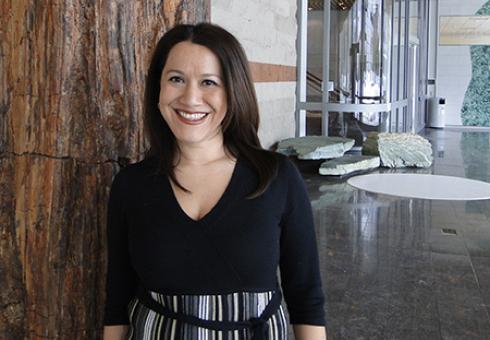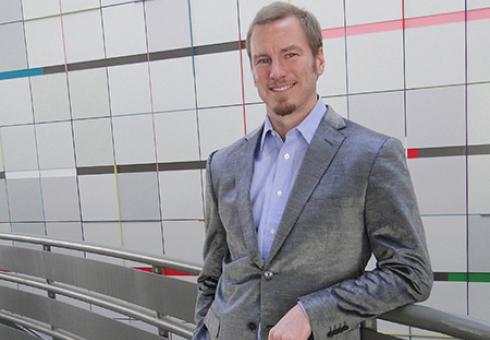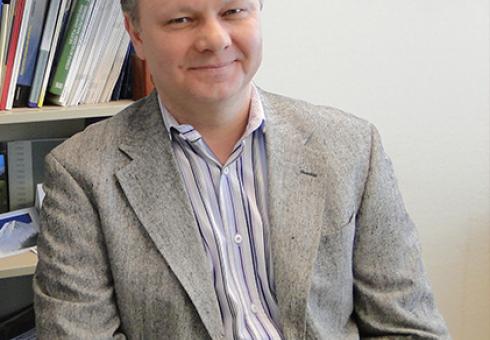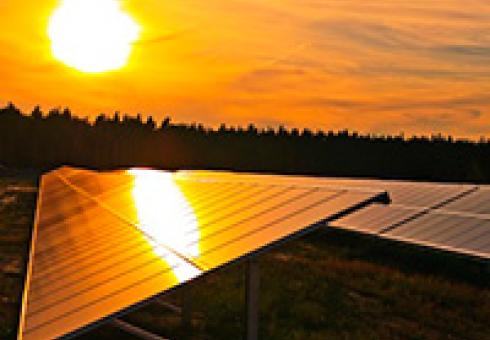News + Media
MIT Spectrum interviews MIT alumnus Kenneth Strzepek, who led a nonpartisan panel of 17 experts to investigate the international water debate between Egypt and Ethiopia in the hopes of forging a common solution.
For millennia, Egypt has relied on the Nile River for its agriculture. So Egyptians were understandably upset in 2011 when their upstream neighbor, Ethiopia, announced plans to build a hydroelectric dam that threatened to reduce the flow out of the spigot: the Grand Ethiopian Renaissance Dam (GERD), sited along a major tributary that contributes most of the water flowing into the Nile. Two years ago, then prime minister Mohammed Morsi even threatened to go to war.
In an effort to break the stalemate, Kenneth Strzepek ’75, SM ’77, PhD ’80 led a nonpartisan panel of 17 experts convened last November through MIT’s new Abdul Latif Jameel World Water and Food Security Lab (J-WAFS) to investigate the issue and forge a common solution. MIT Spectrum spoke this spring with the alumnus—who is currently a research scientist with the MIT Joint Program on the Science and Policy of Global Change and the MIT Center for Global Change Science—about the “great moral dilemma” at the heart of the conflict, and the value of objective advice.
What is your background on water issues in the Nile Basin?
I did my PhD at MIT on water issues in Egypt. For the last 10 years, I’ve been working with the World Bank on the Nile Basin Initiative to come up with a comprehensive framework agreement between all the sovereign states in the region on how to manage the Nile.
What is it that draws you to work on water issues?
Water is such a metaphor for life. At one point, I thought I might go into the ministry. When I went to Africa as an MIT sophomore, I saw the great impact of water on people’s lives, and I realized water resources development was a way I could integrate my faith with my profession by providing physical water as well as spiritual water to people.
What are the roots of the conflict between Egypt and Ethiopia?
Rather than one principle on allocating water across boundaries, the UN has two principles—that all people should have equal access to water within their boundaries, and also that there should be no harm to anybody who is currently developed downstream. Egypt has been using all of this water for thousands of years; if anyone upstream uses some of it, that violates the “do no harm” principle. On the other hand, if 75% of their water comes from Ethiopia, how is it equitable that [Ethiopia] can’t take a drop? So we have this great moral dilemma.
What were the major questions you discussed?
When this dam is completed and filled, it is going to lead to some additional evaporation, and less water going to Egypt, though some suggest that joint operation of the GERD and the Egyptian Aswan High Dam (AHD) could reduce total losses. Could the impact of water loss on Egypt’s economy be offset by Ethiopia selling some of the GERD’s low-cost, clean electricity to Egypt so there would be benefits to both countries? We also knew that since the capacity of the dam is greater than the annual flow of the river, the issue of filling the dam was critical—if Ethiopia started filling the dam and there was a drought, could they stand to wait for years before resuming?
What kind of debates did you have among the members on your panel?
Most of the conclusions were quite universal. When you are not party to a debate, it’s not as impassioned for you. None of us have that history of distrust that the governments have. When Egypt says “We’ve been using that water for 10,000 years,” Ethiopians will say, “Yeah, our water!” Most of us saw that if this was all one country, there would still be upstream-downstream debates, but you could work out a win-win solution.
What are some of the recommendations you made?
The first conclusion is the need to manage the dam cooperatively with the AHD in Egypt. No river with two reservoirs of such size without a plan to operate them in concert will benefit both parties. Not to manage them cooperatively would be a recipe for disaster. Secondly, the dam is going to produce a lot of electricity, but right now there is no sales agreement or connection to export it out of Ethiopia. There needs to be a power plan in place to bring electricity to users or Ethiopia will have no incentive to let water out of the dam through its turbines so it can reach Egypt.
How have the countries responded to the report?
Both Egypt and Ethiopia have commented on the report, and although they expressed some reservations, a week after we presented it, the countries signed a declaration of principles, which is basically an agreement to agree. We can’t know how much impact our report had on that decision, but it was in their hands when they signed the agreement. They are still far away from agreeing to the specific plan to operate the GERD, but the report and follow-up discussions in Cairo and Addis Ababa have outlined a process to facilitate the technical steps towards developing such a plan.
What do you think your report achieved?
A nonpartisan, world-class, international group convened by MIT and including a number of MIT experts has outlined the technical issues facing Ethiopia, Sudan, and Egypt, and has helped put a boundary to negotiations among the countries. We wanted to make this public so there would be some sound technical information out there as they continue their negotiations. We have offered an objective assessment of the current situation and built connections among key water decision makers involved in the basin. I am very proud of what MIT and J-WAFS did; I pray this activity has and will continue to reduce conflict in the region.
Read more about the Grand Ethopian Renaissance Dam report at MIT News.
When it comes to pricing CO2
By Daniel A. Gross
Most economists agree that if we want to efficiently reduce CO2 emissions, we’ll need to put a price on carbon. But a nagging question remains. How are we supposed to figure out a price for an invisible, amorphous gas that underpins the economy and transforms the climate?
It’s relatively easy to put a price on a t-shirt or a pound of apples. Calculate the cost of all the inputs, from raw materials to labor to shipping. Then add a margin for profit, and the product is ready to be sold.
Why do the costs of carbon vary from country to country?
The costs of carbon, by contrast, are diffuse and diverse—which helps explain why the estimated prices of CO2 vary wildly across countries and companies. The US government uses an estimate of $33 per ton of CO2, while Sweden uses the strikingly high figure of $168. In internal calculations, Google Inc. uses $14 per ton, while (perhaps surprisingly) oil companies like BP and Exxon-Mobil use fairly high prices of $40 and $60, respectively.
So where do these carbon price tags come from? Whenever you see dollar amounts tacked on to tons of carbon, economists likely used one of two methods to calculate them.
Calculation methods vary too
The first method is like a very long addition problem. The strategy, according to World Bank senior economist Stephane Hallegate, “is to look at the damages on the environment and societies and people that one ton of carbon would create.” In other words, economists use computer models to tally up all the negative impacts of carbon, and set a carbon price high enough to offset those costs. “If the damages are going to be high, that justifies quite a high carbon price,” explains Niven Winchester, an MIT environmental economist.
In practice, however, adding up the costs of carbon can be extremely tedious. “You’re solving a puzzle,” he says—but the puzzle has a huge number of finicky pieces. A dizzying array of factors can affect the estimated cost of carbon. For example: How much will solar energy cost in 30 years? How much meat will humans consume, one century from now? How much CO2 would cause the Greenland ice sheet to melt? Because there are so many factors to estimate, MIT outsources its calculations to a massive computing center 100 miles west of Boston, the Massachusetts Green High Performance Computing Center (MGHPCC). Unlike simplified models of the economy, “integrated models” may generate datasets of many terabytes — a reflection of the many environmental and economic processes that researchers hope to capture.
Read the full article at roadtoparis.info
For the 2015 Karl Taylor Compton Lecture, MIT welcomes Professor Mario J. Molina, co-winner of the 1995 Nobel Prize in Chemistry and former Institute Professor.
Report highlights enormous potential and discusses pathways toward affordable solar energy.




